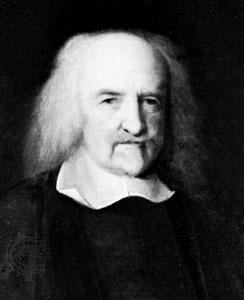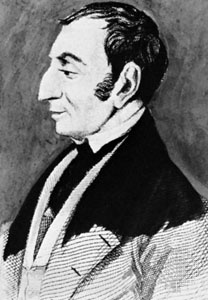social class
social differentiation
also called class
a group of people within a society who possess the same socioeconomic status. Besides being important in social theory, the concept of class as a collection of individuals sharing similar economic circumstances has been widely used in censuses and in studies of social mobility.
The term class first came into wide use in the early 19th century, replacing such terms as rank and order as descriptions of the major hierarchical groupings in society. This usage reflected changes in the structure of western European societies after the industrial and political revolutions of the late 18th century. Feudal distinctions of rank were declining in importance, and the new social groups that were developing—the commercial and industrial capitalists (capitalism) and the urban working class in the new factories—were defined mainly in economic terms, either by the ownership of capital or, conversely, by dependence on wages. Although the term class has been applied to social groups in a wide range of societies, including ancient city-states, early empires, and caste or feudal societies, it is most usefully confined to the social divisions in modern societies, particularly industrialized ones. Social classes must be distinguished from status groups (social status); the former are based primarily upon economic interests, while the latter are constituted by evaluations of the honour or prestige of an occupation, cultural position, or family descent.


 Theories of social class were fully elaborated only in the 19th century as the modern social sciences, especially sociology, developed. Political philosophers such as Thomas Hobbes (Hobbes, Thomas), John Locke (Locke, John), and Jean-Jacques Rousseau (Rousseau, Jean-Jacques) discussed the issues of social inequality and stratification, and French and English writers in the late 18th and early 19th centuries put forth the idea that the nonpolitical elements in society, such as the economic system and the family, largely determined a society's form of political life. This idea was taken farther by the French social theorist Henri de Saint-Simon (Saint-Simon, Henri de), who argued that a state's form of government corresponded to the character of the underlying system of economic production. Saint-Simon's successors introduced the theory of the proletariat, or urban working class, as a major political force in modern society, directly influencing the development of Karl Marx's (Marx, Karl) theory of class, which has dominated later discussion of the topic.
Theories of social class were fully elaborated only in the 19th century as the modern social sciences, especially sociology, developed. Political philosophers such as Thomas Hobbes (Hobbes, Thomas), John Locke (Locke, John), and Jean-Jacques Rousseau (Rousseau, Jean-Jacques) discussed the issues of social inequality and stratification, and French and English writers in the late 18th and early 19th centuries put forth the idea that the nonpolitical elements in society, such as the economic system and the family, largely determined a society's form of political life. This idea was taken farther by the French social theorist Henri de Saint-Simon (Saint-Simon, Henri de), who argued that a state's form of government corresponded to the character of the underlying system of economic production. Saint-Simon's successors introduced the theory of the proletariat, or urban working class, as a major political force in modern society, directly influencing the development of Karl Marx's (Marx, Karl) theory of class, which has dominated later discussion of the topic. For Marx, what distinguishes one type of society from another is its mode of production (i.e., the nature of its technology and division of labour), and each mode of production engenders a distinctive class system in which one class controls and directs the process of production while another class is, or other classes are, the direct producers and providers of services to the dominant class. The relations between the classes are antagonistic because they are in conflict over the appropriation of what is produced, and in certain periods, when the mode of production itself is changing as a result of developments in technology and in the utilization of labour, such conflicts become extreme and a new class challenges the dominance of the existing rulers of society. The dominant class, according to Marx, controls not only material production but also the production of ideas; it thus establishes a particular cultural style and a dominant political doctrine, and its control over society is consolidated in a particular type of political system. Rising classes that gain strength and influence as a result of changes in the mode of production generate political doctrines and movements in opposition to the ruling class.
For Marx, what distinguishes one type of society from another is its mode of production (i.e., the nature of its technology and division of labour), and each mode of production engenders a distinctive class system in which one class controls and directs the process of production while another class is, or other classes are, the direct producers and providers of services to the dominant class. The relations between the classes are antagonistic because they are in conflict over the appropriation of what is produced, and in certain periods, when the mode of production itself is changing as a result of developments in technology and in the utilization of labour, such conflicts become extreme and a new class challenges the dominance of the existing rulers of society. The dominant class, according to Marx, controls not only material production but also the production of ideas; it thus establishes a particular cultural style and a dominant political doctrine, and its control over society is consolidated in a particular type of political system. Rising classes that gain strength and influence as a result of changes in the mode of production generate political doctrines and movements in opposition to the ruling class.The theory of class is at the centre of Marx's social theory, for it is the social classes formed within a particular mode of production that tend to establish a particular form of state, animate political conflicts, and bring about major changes in the structure of society.
Subsequent theories of class have been chiefly concerned with revising, refuting, or providing an alternative to Marxism. Early in the 20th century, German sociologist Max Weber (Weber, Max) questioned the importance of social classes in the political development of modern societies, pointing out that religious mores, nationalism, and other factors played significant roles. Weber proposed limiting the concept of class to impersonal income distinctions between groups, thereby distinguishing class from social status, collectivities, or political hierarchies. But the Marxian (socialism) emphasis on the importance of class conflict—i.e., on the conflict and struggle between the classes for control of the means of production—has been the most controversial issue dividing social theorists in their analysis of class structure. Many opponents of Marxist theory have focused attention on the functional interdependence of different classes and their harmonious collaboration with each other. And indeed, by the late 20th century it seemed undeniable that the classes in capitalist societies had tended to lose their distinctive character, while the antagonism between them had declined to such an extent that in most economically advanced countries it no longer produced serious political conflict. Moreover, Marxism's prediction of the proletariat's successful revolution against the bourgeoisie and its replacement of the capitalist system with a classless society have rung increasingly hollow in light of the dismal record of most 20th-century Marxist governments and their wholesale collapse from internal causes between 1989 and 1991. Finally, some sociologists have concluded that gradations in social and economic status are continuous in Western societies, which suggests that class boundaries have grown less distinct.
Despite controversies over the theory of class, there is general agreement among social scientists on the characteristics of the principal social classes in modern societies. Sociologists generally posit three classes: upper, working (or lower), and middle.
The upper class in modern capitalist societies is often distinguished by the possession of largely inherited wealth. The ownership of large amounts of property and the income derived from it confer many advantages upon the members of the upper class. They are able to develop a distinctive style of life based on extensive cultural pursuits and leisure activities, to exert a considerable influence on economic policy and political decisions, and to procure for their children a superior education and economic opportunities that help to perpetuate family wealth.
Historically, the principal contrast with the upper class in industrial societies was provided by the working class, which traditionally consisted of manual workers in the extractive and manufacturing industries. Given the vast expansion of the service sector in the world's most advanced economies, it has been necessary to broaden this definition to include in the working class those persons who hold low-paying, low-skilled, nonunionized jobs in such service industries as food service and retail sales. There are considerable differences within the working class, however, and a useful distinction exists between skilled, semiskilled, and unskilled workers that broadly corresponds with differences in income level. What characterizes the working class as a whole is a lack of property and dependence on wages. Associated with this condition are relatively low living standards, restricted access to higher education, and exclusion, to a large extent, from the spheres of important decision making. Aside from the dramatic rise in living standards that occurred in the decades after World War II, the main factor affecting the working class in the second half of the 20th century was a general shift in the economy from manufacturing to service industries, which reduced the number of manual workers. In the United States and Britain, among other countries, the decline in traditional manufacturing industries left a core of chronically unemployed persons isolated from the economic mainstream in decaying urban areas. This new urban substratum of permanently jobless and underemployed workers has been termed the underclass by some sociologists.
The middle class may be said to include the middle and upper levels of clerical workers, those engaged in technical and professional occupations, supervisors and managers, and such self-employed workers as small-scale shopkeepers, businessmen, and farmers. At the top—wealthy professionals or managers in large corporations—the middle class merges into the upper class, while at the bottom—routine and poorly paid jobs in sales, distribution, and transport—it merges into the working class.
It seems clear that rising living standards in Western industrial societies after 1945, along with changes in social policy, have generated significant changes in the class system. A general diminution of class differences has resulted from higher standards of living, greater social mobility, and a limited redistribution of wealth and income. These changes were generally reflected in a decline of class ideologies and class conflict. The middle class, which rose to dominance in Western capitalist societies in the 19th and 20th centuries, consolidated its position in the decades after World War II, and this process was repeated in the expanding economies of Japan and other East and Southeast Asian countries in the late 20th and early 21st centuries.
- adding machine
- Addis Ababa
- Addison
- Addison, Christopher Addison, 1st Viscount, Baron Addison Of Stallingborough
- Addison disease
- Addison Emery Verrill
- Addison, Joseph
- Addison, Thomas
- addition reaction
- additive
- Addo Elephant National Park
- adductor muscle
- ad- Dīnawarī
- Ade, George
- Adela
- Adelaer
- Adelaide
- Adelaide Crapsey
- Adelaide Hall
- Adelaide Kemble
- Adelaide Ristori
- Adelaide River
- Adelaide, Saint
- adelantado
- Adelard Of Bath